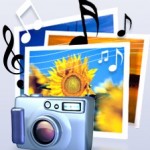 Moving from the last post on Reimagining Conversation, I wanted to dig deeper into the importance of oral language as foundational to literacy development. We are creatures of connection and we use language to communicate our needs, ideas, feelings and discoveries. The abilities to express ourselves grow over time and practice…lots of practice. Yes, I know you’ve met those who seem to have an incredible command of spoken language. But for most of us, it is through practice that we become comfortable with organizing our thoughts and articulating it in such a way that lead to understandings.
Moving from the last post on Reimagining Conversation, I wanted to dig deeper into the importance of oral language as foundational to literacy development. We are creatures of connection and we use language to communicate our needs, ideas, feelings and discoveries. The abilities to express ourselves grow over time and practice…lots of practice. Yes, I know you’ve met those who seem to have an incredible command of spoken language. But for most of us, it is through practice that we become comfortable with organizing our thoughts and articulating it in such a way that lead to understandings.
The “art of speaking and listening” plays a critical role in the development of writing and reading skills. How do we effectively provide the experiences and practices needed to truly strengthen this area? One obvious way is to use technology as a vehicle. The key would be to find a way to “say what we want to say, then freeze that in some way in order to reflect upon it, then change/recreate it to give it deeper meaning”. So we’re after a device that will  ‘record and freeze words in time’…hence “spoken ink”. Using technology, we have many options that offer not only engagement but flexibility. Consider the following as starting points for rethinking what we currently do.
‘record and freeze words in time’…hence “spoken ink”. Using technology, we have many options that offer not only engagement but flexibility. Consider the following as starting points for rethinking what we currently do.
 Talking avatars: These are online and definitely engaging (visually, kinesthetically, musically, linguistically) and can easily be embedded in blogs and wikis. Further, avatars take the place of students and thus for the very shy student this is a definite plus. Blabberize, Voki, and Build Your Wild Self are sites that you can create or upload images and use them as voice recorders. Some of our teachers are already using them to share their weekly vocabulary content.
Talking avatars: These are online and definitely engaging (visually, kinesthetically, musically, linguistically) and can easily be embedded in blogs and wikis. Further, avatars take the place of students and thus for the very shy student this is a definite plus. Blabberize, Voki, and Build Your Wild Self are sites that you can create or upload images and use them as voice recorders. Some of our teachers are already using them to share their weekly vocabulary content.
Online Sound Recorders: Vocaroo (simple), AudioBoo, Aviary’s Myna (audio editor like Audacity) are available audio recorders.
On the Computer:
- Photostory – this free software can be downloaded at home. You will need to upload an image but all recordings can be edited and re-edited. As well, background music can be created and inserted.

- Audacity – this free tool has an extremely flexible sound editor for those higher end editing needs.
- Windows Sound Recorder (in Accessories > Entertainment) – this is a basic sound recorder that anyone can use to save short recordings.
How would I use this?
- Create one classroom account so all students have access. This makes life easier for you to manage the content.
- Build an activity that arises out of your content area, something the students can really sink their teeth… (eg. something important to share, something controversial that needs some research … discoveries or important learnings of the week?)
- Use partner talk to expand/clarify missing details; record ideas using a graphic organizer (eg. Inspiration); practice and practice; record and post to the world; self assess according to a criteria (and redo). (*Nothing like having an authentic audience to encourage “redo”.)
- Inform other teachers or other professionals (depending on your topic) or students to comment on student recordings.
Assessment – Critical to Knowing?
Consider using the performance standards for oral language to help students reflect upon their learning. Criteria that is clearly outlined and anchored with examples go a long way in supporting students to identify what to do next.
Click here to download.
What tools are you using or how are you facilitating opportunities for practice in oral language? Please offer your comments or suggestions.